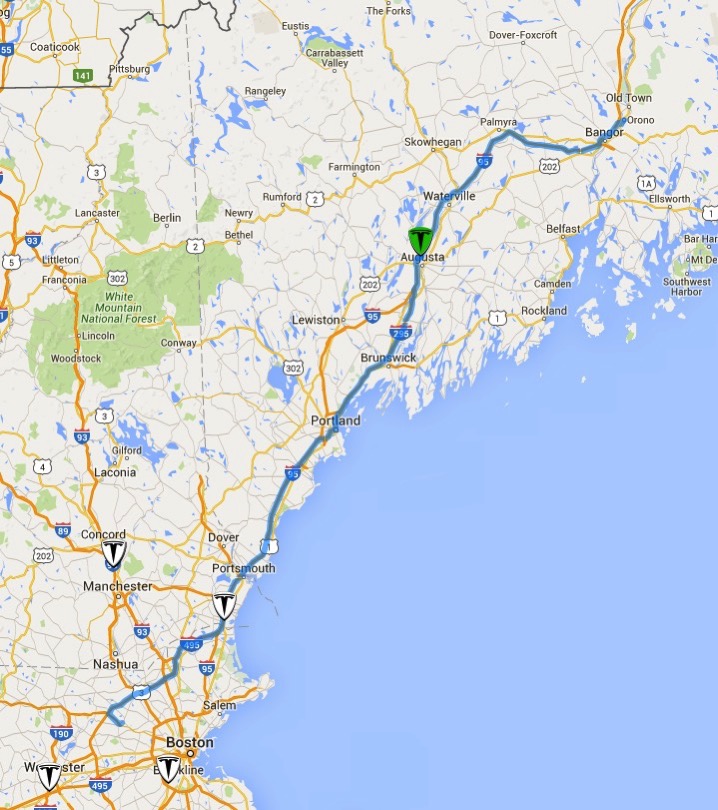
Son David and I are driving to University of Maine at Orono on Saturday for student orientation. That’s a trip of just over 250 miles each way, and we’re taking the Tesla on a shakedown cruise.
Howe’s first rule of Tesla driving: Plan the trip like a pilot would (full disclosure: I earned a private pilot’s license about 40 years ago, but most of the lessons are really good for many life situations). Good pilots think running out of fuel during flight to be the making of a very very bad day. The same should be true for Tesla drivers. That means planning refueling stops and always keeping a reserve for emergencies. My planned reserve is 20% battery or about 60 miles. Therefore, while my 90 kWh battery is rated for 293 miles, my planning battery size is 80% of that or 234 miles.
The map above shows the results of planning the trip through EVTripPlanner.com and PlugShare.com. The trip from our house will be 253 miles each way. Two superchargers (high speed chargers dedicated to Teslas) are along our route: Seabrook, NH, and Augusta, ME. Augusta is 172 miles away, which fits nicely within my 234 mile planning range, so we won’t need Seabrook; Augusta, ME will be our first stop.
I’m only targeting 172 miles of range on this first leg, so I’m not going to charge my battery to its full capacity; 100% charging cycles stress the battery a little and may decrease its lifetime. I normally charge to only 80% around town, but today, I’m charging the battery to 90% for the trip. I’ve adjusted the charging rate so that the car will top off from our 9 kW solar array today and consume no grid power. We’ll make the trip tomorrow entirely on sunshine, because Tesla installs solar arrays for its superchargers as well.
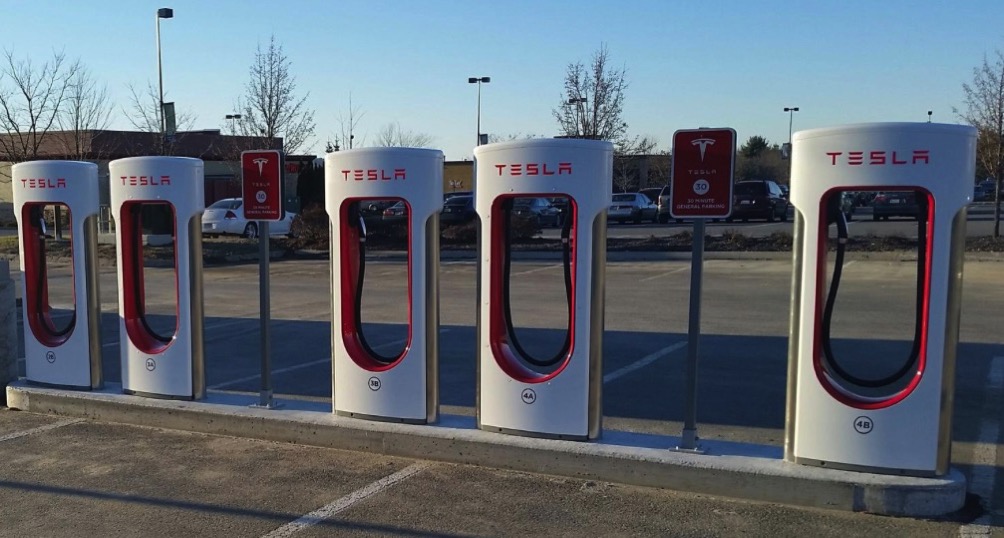 Once we hit Augusta, our planned itinerary is to travel to UMaine Orono, which is another 84 miles. I’m not staying on campus, so I have to make a 22 mile round trip to my hotel in Bangor. Then, because there are no superchargers in Orono, we have to have enough range to make it the 84 miles back to Augusta. Let’s see: 84 + 22 + 84 = 190 miles. That’s within my 234 mile planning range.
Once we hit Augusta, our planned itinerary is to travel to UMaine Orono, which is another 84 miles. I’m not staying on campus, so I have to make a 22 mile round trip to my hotel in Bangor. Then, because there are no superchargers in Orono, we have to have enough range to make it the 84 miles back to Augusta. Let’s see: 84 + 22 + 84 = 190 miles. That’s within my 234 mile planning range.
That said, I want some extra padding in case we want to make a side trip or two, so our plan is that we’ll charge to the full 100% battery capacity at Augusta. Charging up to 100% takes a lot longer than just 80% because the last 20% is done at a lower rate to protect the battery, but the superchargers are really fast for the first 80%. While we could get a 50% charge in about 20 minutes, I’m budgeting about an hour to get a full 100% charge from the supercharger. That should be plenty of range for our roughly 24 hours in Orono and Bangor, and should bring us back to Augusta on Sunday with something like 90 miles or 30% charge left
When we hit the Augusta charger on Sunday, we’ll only be 172 miles from home, so we won’t need a full charge, so we’ll likely just charge to 90% again, which should only take about 40 minutes or so.
Howe’s second rule of Tesla driving also comes from flying: Always have a backup flight plan. I’ve got a few for this trip:
- RV campgrounds. Should the Augusta supercharger be down (unlikely) or we run short of range in the area around Orono, my backup plan is to check into Paul Bunyon campground in Bangor for a few hours and make use of their 240-volt 50-amp service. That will add range to my car at the rate of 29 miles per hour of charging. It’s not my first choice because adding 100 miles of range would take about 4 hours, but it would work in a pinch.
- The local Nissan dealer. Nissan sells the Leaf electric car and provides charging facilities for them and to the public. I could stop at the Bangor Nissan dealer, and take advantage of its J1772 charger (Tesla supplies an adapter), although that wouldn’t really be any faster than the RV park. It’s a backup plan but I feel like it’s also a bit tacky to take advantage of another EV manufacturer’s charging infrastructure. Consider this a backup to the backup.
- Dunkin Donuts. I could also stop at the Bangor Dunkin Donuts in Bangor for some 240 volt EV service, but it will only charge at 2 amps instead of 40. That would take a lot longer than the campground, but it is free.
- My hotel. If you ask nicely, often hotels will let you plug into one of their 110-volt outlets for a charge. I’ll only be at the hotel about 8 hours, and 110-volt outlets only add about 3 miles of range every hour. Still, if I were desperate, another 24 miles of range might allow me to get to a faster charging system somewhere else. This is, in my view, an absolutely last resort option.
By the way, if you’re not into detailed trip planning, Tesla makes it easy for you to improvise trips like this. Tesla’s on-board navigation system will automatically route you through superchargers and will alert you if your route or range falls below the distance needed to drive to the next charger. I can also pull up PlugShare on the in-car Web browser if I want to research other charging options.
Bottom line: We will have plenty of charge for all our planned stops, we have 20% of our charge reserved for contingencies, and we have backup plans if things go south. This should be a lot of fun and no stress.
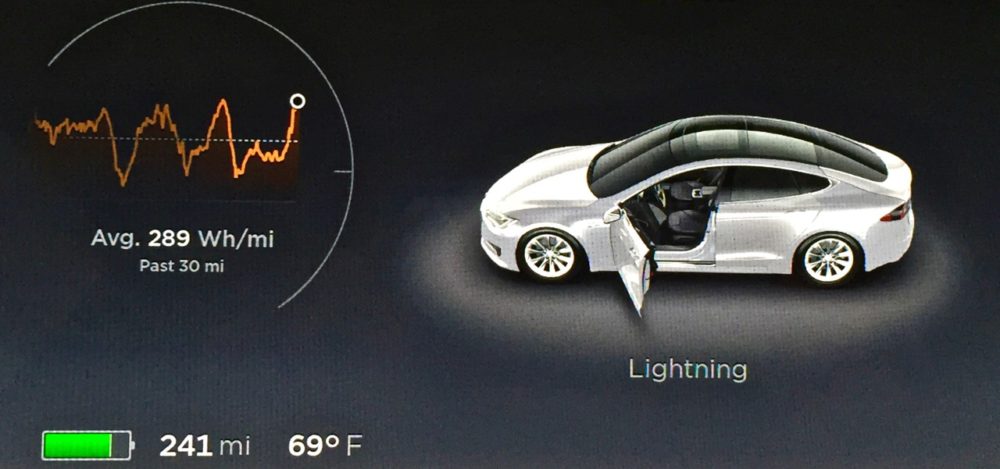

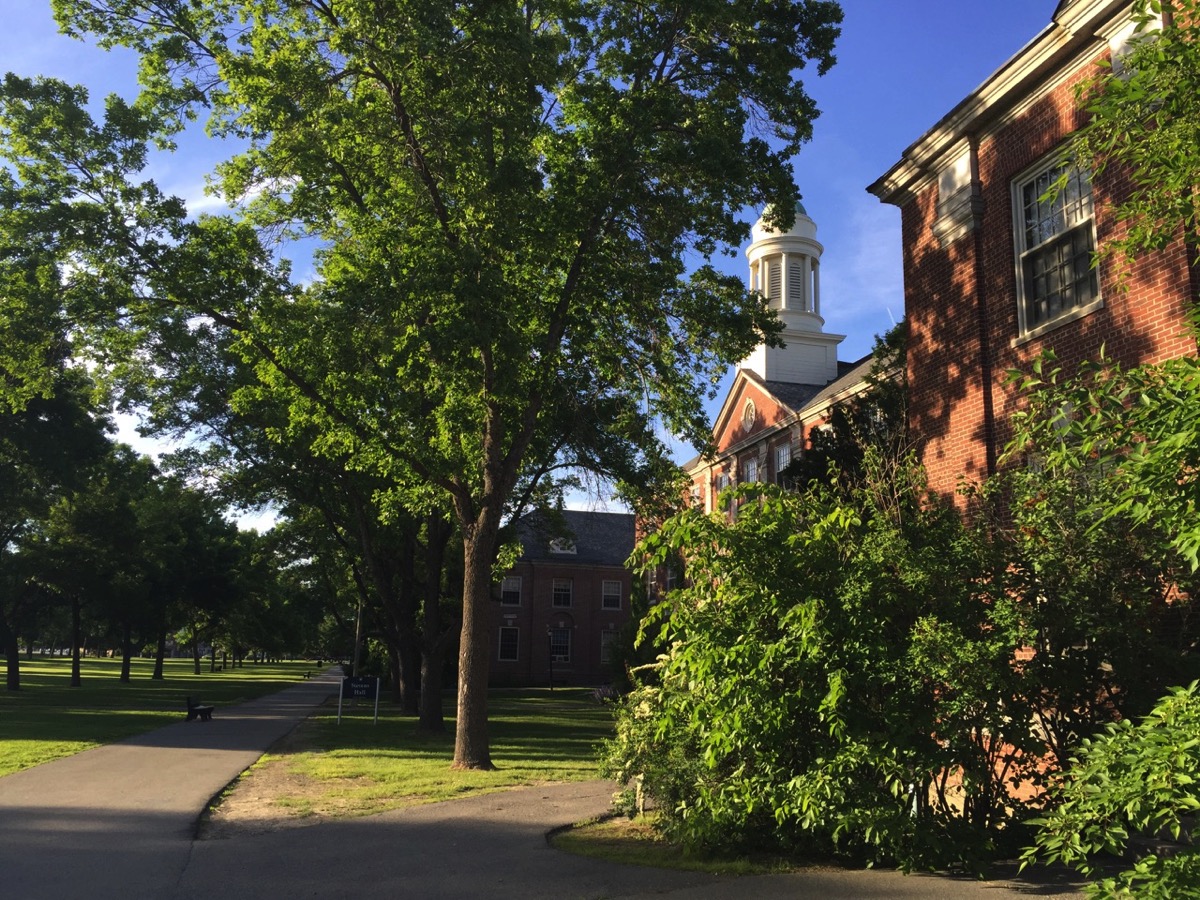
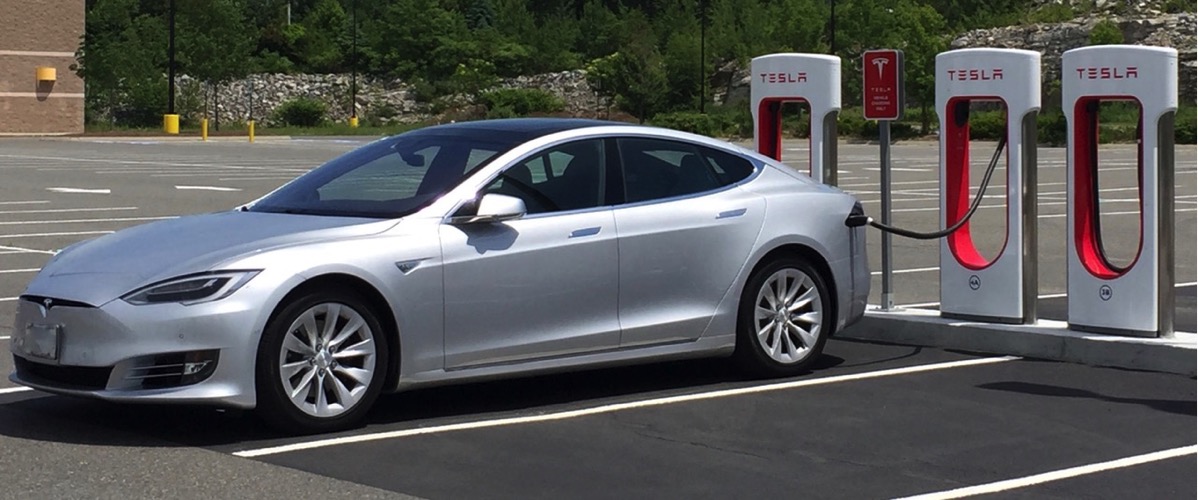
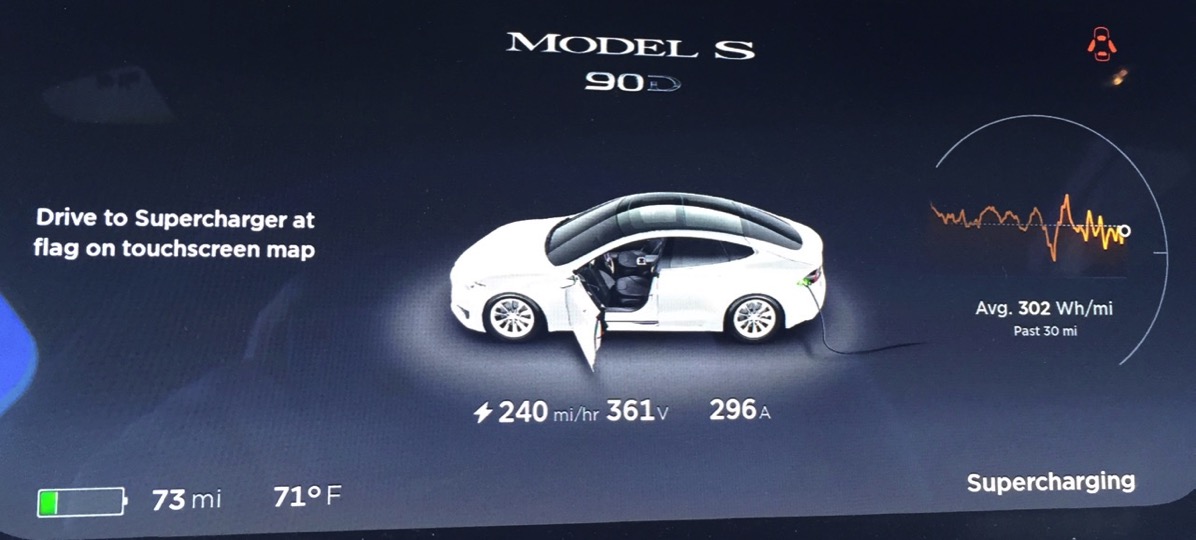



 Once we hit Augusta, our planned itinerary is to travel to UMaine Orono, which is another 84 miles. I’m not staying on campus, so I have to make a 22 mile round trip to my hotel in Bangor. Then, because there are no superchargers in Orono, we have to have enough range to make it the 84 miles back to Augusta. Let’s see: 84 + 22 + 84 = 190 miles. That’s within my 234 mile planning range.
Once we hit Augusta, our planned itinerary is to travel to UMaine Orono, which is another 84 miles. I’m not staying on campus, so I have to make a 22 mile round trip to my hotel in Bangor. Then, because there are no superchargers in Orono, we have to have enough range to make it the 84 miles back to Augusta. Let’s see: 84 + 22 + 84 = 190 miles. That’s within my 234 mile planning range.